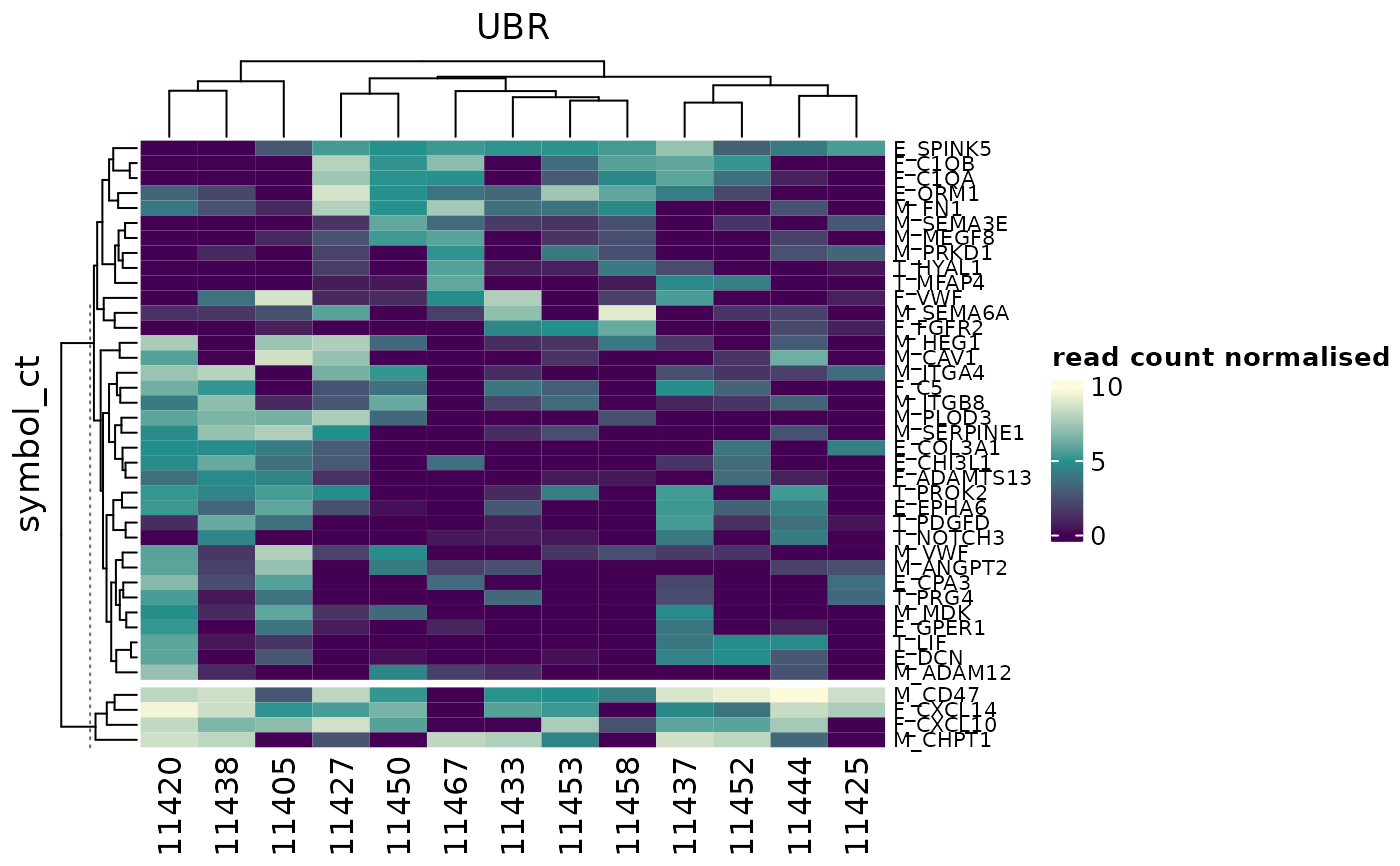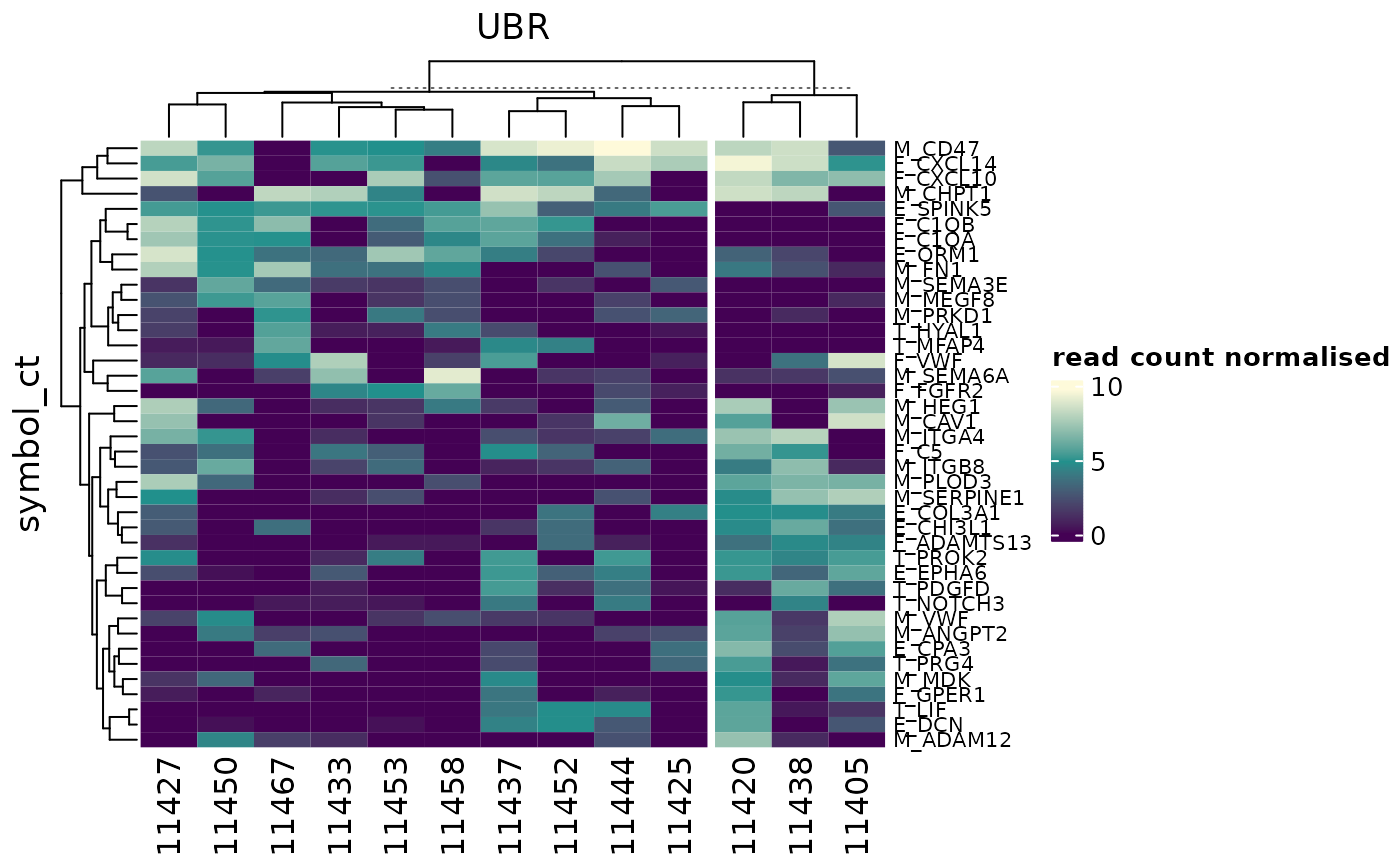Split the heatmap row-wise depending on the biggest branches in the cladogram.
Source:R/methods.R
split-methods.Rdsplit_rows() from a `InputHeatmap` object, split the row cladogram.
split_columns() from a `InputHeatmap` object, split the column cladogram.
split_rows(.data, number_of_groups)
# S4 method for class 'InputHeatmap'
split_rows(.data, number_of_groups)
split_columns(.data, number_of_groups)
# S4 method for class 'InputHeatmap'
split_columns(.data, number_of_groups)Source
[Mangiola and Papenfuss., 2020](https://joss.theoj.org/papers/10.21105/joss.02472)
[Mangiola and Papenfuss., 2020](https://joss.theoj.org/papers/10.21105/joss.02472)
Arguments
Value
A `InputHeatmap` object that gets evaluated to a `ComplexHeatmap`
A `InputHeatmap` object that gets evaluated to a `ComplexHeatmap`
A `InputHeatmap` object that gets evaluated to a `ComplexHeatmap`
A `InputHeatmap` object that gets evaluated to a `ComplexHeatmap`
Details
It uses `ComplexHeatmap` as visualisation tool.
It uses `ComplexHeatmap` as visualisation tool.
References
Mangiola, S. and Papenfuss, A.T., 2020. "tidyHeatmap: an R package for modular heatmap production based on tidy principles." Journal of Open Source Software. doi:10.21105/joss.02472.
Mangiola, S. and Papenfuss, A.T., 2020. "tidyHeatmap: an R package for modular heatmap production based on tidy principles." Journal of Open Source Software. doi:10.21105/joss.02472.

